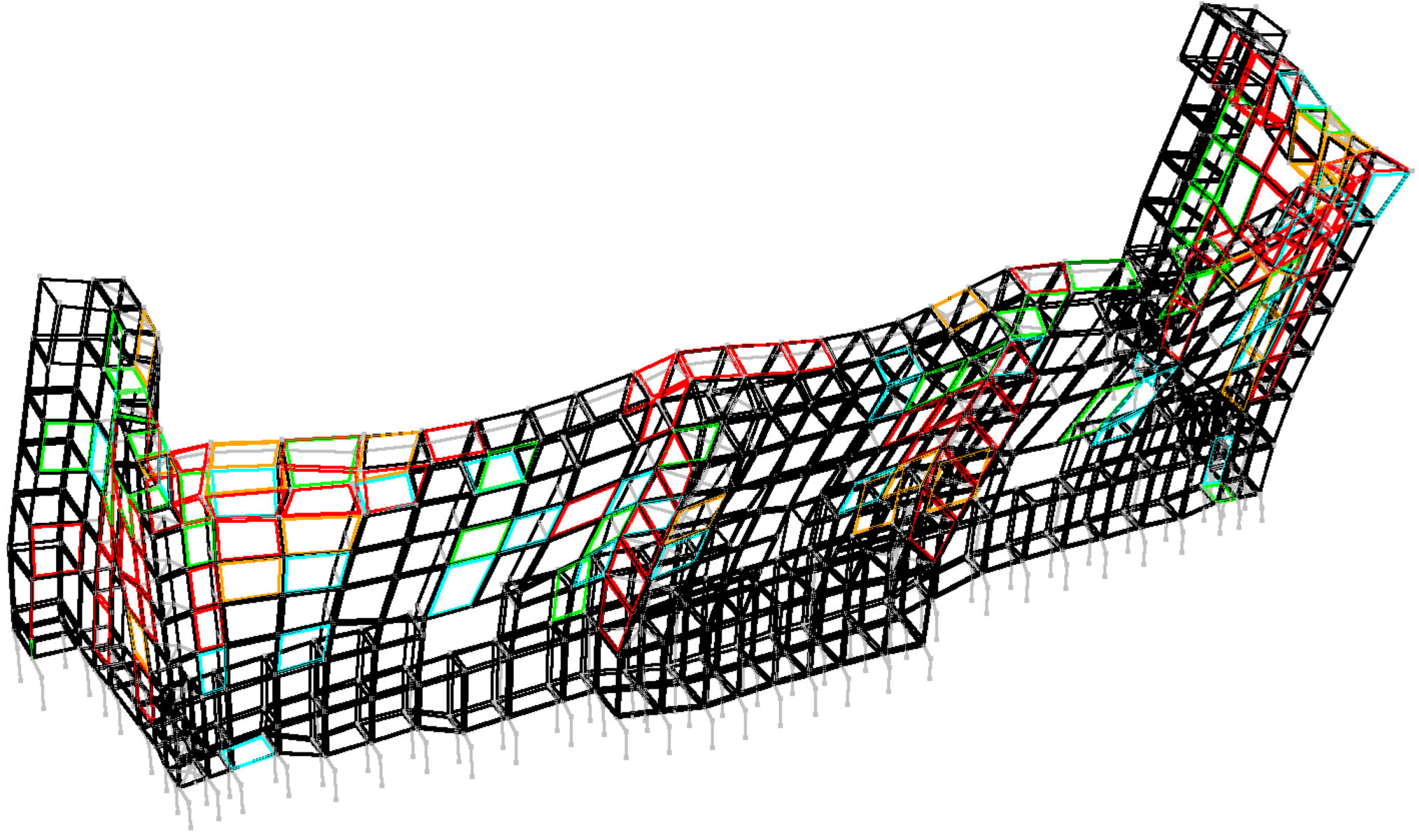
Our Expertise
Advanced Analytics
Our team uses advanced analytics to predict structural behavior and optimize design, creating real value for clients and building users. By harnessing the insight from this data-driven process, we pioneer innovative strategies for structural design that result in improved performance and more cost-effective solutions, particularly for seismic protection. Our advanced analytics capabilities leverage nonlinear dynamic computational tools and detailed material modeling to closely capture structural response, synthesize results, and drive informed design decisions. Our goal is always to help the design team by lending our problem-solving skills, informed by our special expertise in structural behavior, to achieve the broader goals of the project without compromising important elements of the building design.
Data driven design
At Tipping, we don’t just perform calculations. Instead, we solve problems by making meaning out of data. Our Advanced Analytics Team routinely uses sophisticated analytical methods to collectively arrive at more elegant and responsive design solutions. This powerful approach helps achieve clients’ goals by improving performance and reducing cost.
Custom design tools
Over the last 40 years, Tipping has developed a powerful suite of custom tools to solve complex problems in structural design. Our earthquake shaking simulations allow us to gain deep insights into structural behavior and develop tailored and cost-effective solutions.
These tools facilitate rapid model creation and data processing to communicate complex metrics in a way that’s clear and compelling for all stakeholders. When we better understand structural behavior, we can create more efficient uses of structure—resulting in improved performance, cost savings, less architectural impact and simpler construction. We let the project’s needs dictate the appropriate level of analysis, and believe that analysis should always be performed in service of the design. Unlike our competitors, we deploy these tools more routinely to solve problems at every scale.
Tipping’s Custom Design Tools:
- Allow us to nimbly connect analytical models to real world problems in order to explore a variety of design options
- Allow for lateral exploration, often providing surprising results that can be used to create unconventional design solutions
- Minimize gaps between analysis and design drawings
- Generate rich meaningful visualizations of complex data

Improved performance through a detailed nonlinear analysis
Our nonlinear analysis and detailed modeling approach allows the team to better understand structural behavior, allowing us to identify often unexpected approaches that are high performing, cost effective, and offer efficiencies in materials usage and construction duration.
At 520 El Camino Real, the owners elected to perform a detailed seismic evaluation to identify potential vulnerabilities and voluntarily address critical deficiencies as part of the overall renovations. The team explored two effective ways of increasing global lateral strength: adding concrete walls and introducing diagonal bracing using buckling-restrained braces (BRBs). The BRBs were arranged to maximize the contribution of the gravity frame to overturning and eliminate the need for new deep foundations. The approach was tested and validated through detailed nonlinear seismic shaking simulations, which led to the most cost-effective approach. These two important design features created significant economies for construction.

Cost savings through simpler construction
The data-driven design process achieved through advanced analytics leads to informed decision making and cost savings for our clients. When strengthening an existing building, this often includes minimizing demolition and alterations to areas that otherwise don’t need to be affected or are costly to repair, working around limited site access, and other construction logistics.
Our retrofit strategy at the Carquinez Senior Apartments was to strengthen only the ground story with four new concrete walls founded on new grade beams with micropiles. The system is designed to absorb most of the seismic energy and protect the upper floors, without adding new elements. We studied the existing drawings, conducted field investigations, and created a highly detailed analytical model to tune the new concrete-wall elements to find the optimal performance, which would leave the upper floors undamaged during an earthquake. We verified the retrofitted structure by subjecting the model to scaled earthquake records. Our solution represented a rare occasion in which good structural performance can be achieved economically with minimal disruption. For a budget of only $1 million ($3-5 million less than other engineering firms’ schemes based on prescriptive methods), the design achieved the necessary level of strength and resilience while avoiding the displacement of the residents in the upper floors during construction.

Targeted retrofits give historical structures new life
Advanced analytics’ ability to understand the structural response of a historic structure and detailed modeling to represent the strengthened response, we are able to partner with the design team to identify targeted retrofit schemes that address deficiencies without sacrificing the character of existing historic structures.
Using a sophisticated nonlinear response history analysis with soil-structure interaction, the engineering program at UC Berkeley’s Hearst Greek Theatre was stabilized with an approach that concealed all interventions, so as to not impact the historic colonnade and stage. Rigorous modeling using nonlinear seismic shaking simulations with soil-structure interaction resulted in a much more cost- and time-efficient design. The renovation took place on a very tight and weather-contingent schedule.

Advanced Analytics capabilities
- Existing Structure Evaluations (ASCE 41)
- Seismic and wind assessment of structures
- Performance-based seismic and wind engineering
- Seismic shaking simulations
- Seismic Isolation, energy dissipation systems
- Forensics and failure analysis
- Soil–structure interaction and foundation modeling
- Synthesizing and scaling ground motions
- Physical testing and predictive analysis
- Value engineering
- Research, development and design, of innovative structural systems
- Alternate means and materials approvals consulting
- Peer review
- Vibration field testing and analysis


